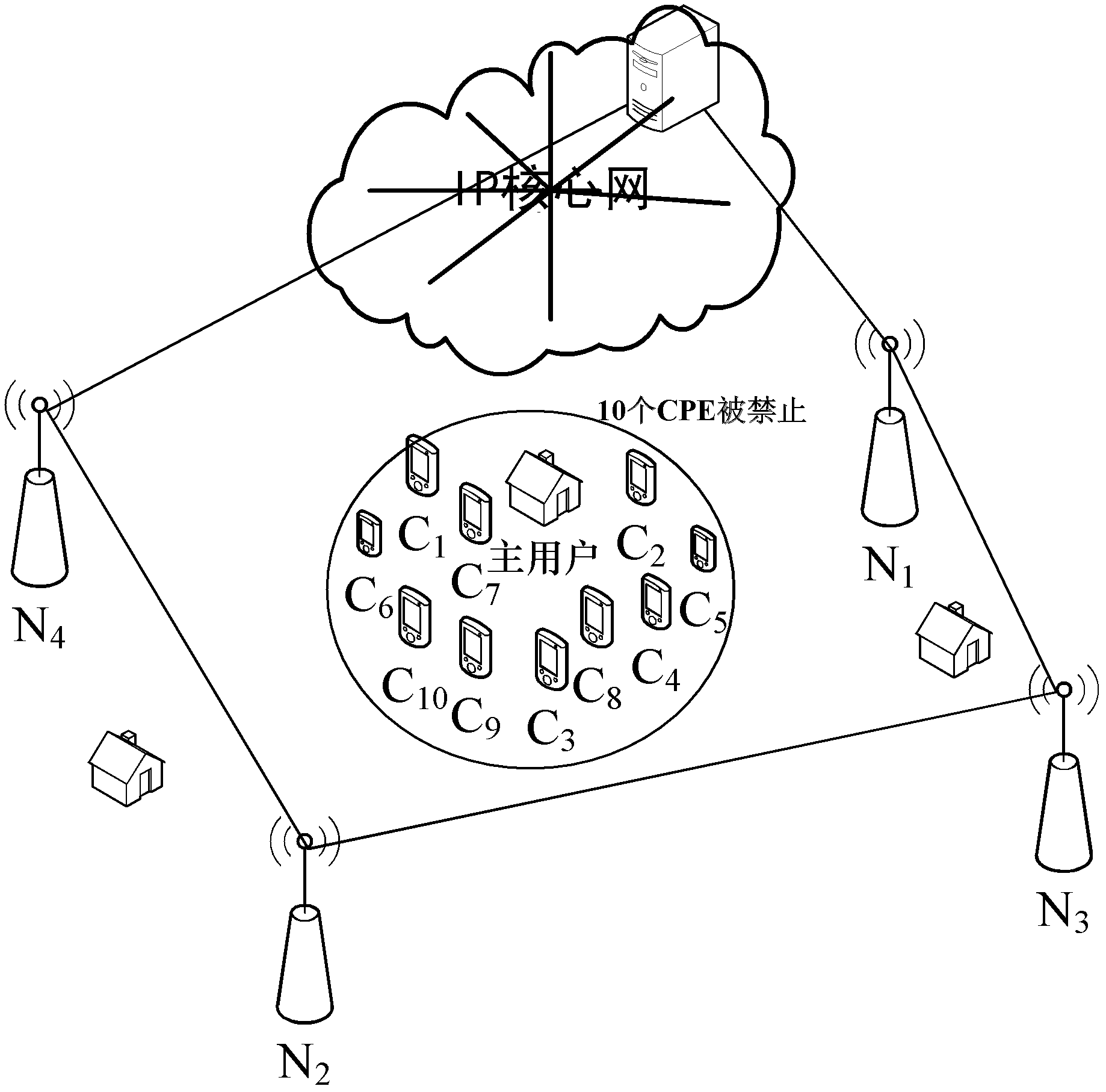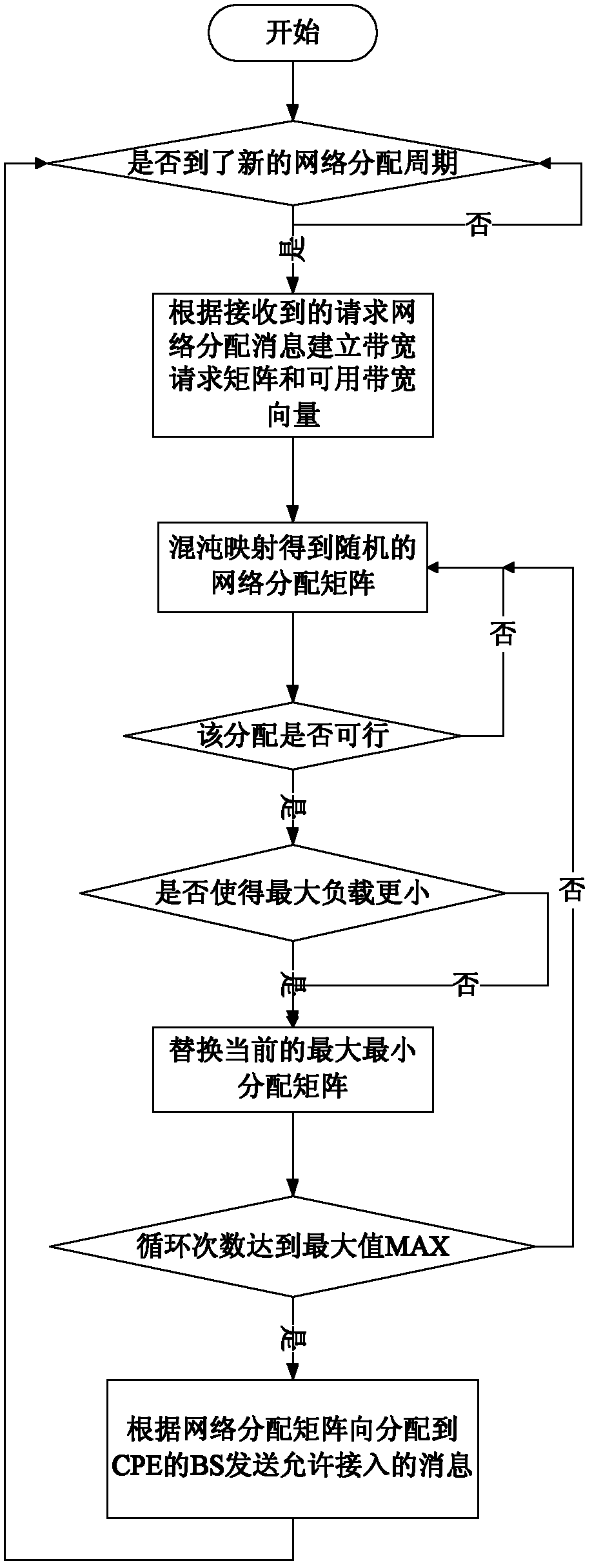Network switching side control method for terminal group access network based on cognitive radio
An access network handover and cognitive radio technology, applied in the field of wireless area network optimization, can solve the problems of heavy BS load, unfair network handover of CPEs, frequent network handover, etc.
- Summary
- Abstract
- Description
- Claims
- Application Information
AI Technical Summary
Problems solved by technology
Method used
Image
Examples
Embodiment
[0052] The architecture of the cognitive radio network in this embodiment is as follows figure 1 As shown, areas with dense communication requirements can ensure communication quality through multi-base station coverage. The core network can use cooperative game or non-cooperative game methods to rationally allocate spectrum resources so that base stations work in different frequency bands. When a primary user appears, all CPEs users accessing this frequency band need to perform network switching, which faces the problem of which cell to access. If the choice is not appropriate, it is likely to cause some cellular networks to be congested, resulting in a decline in communication quality. At the same time, the spectrum resources of other cells are not fully utilized. In this embodiment, on the basis of satisfying the communication bandwidth requirements of each CPE, the loads of multiple base stations can be evened out, and precious spectrum resources can be fully utilized.
...
PUM
 Login to View More
Login to View More Abstract
Description
Claims
Application Information
 Login to View More
Login to View More - R&D
- Intellectual Property
- Life Sciences
- Materials
- Tech Scout
- Unparalleled Data Quality
- Higher Quality Content
- 60% Fewer Hallucinations
Browse by: Latest US Patents, China's latest patents, Technical Efficacy Thesaurus, Application Domain, Technology Topic, Popular Technical Reports.
© 2025 PatSnap. All rights reserved.Legal|Privacy policy|Modern Slavery Act Transparency Statement|Sitemap|About US| Contact US: help@patsnap.com



